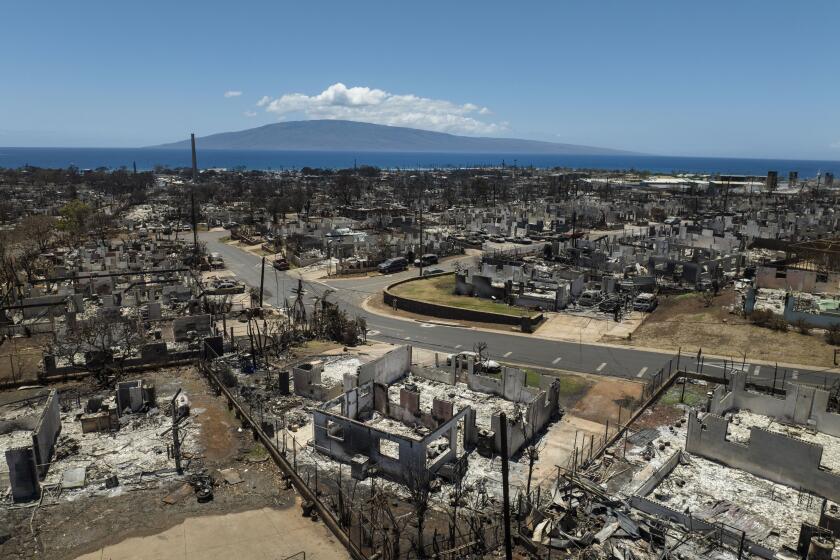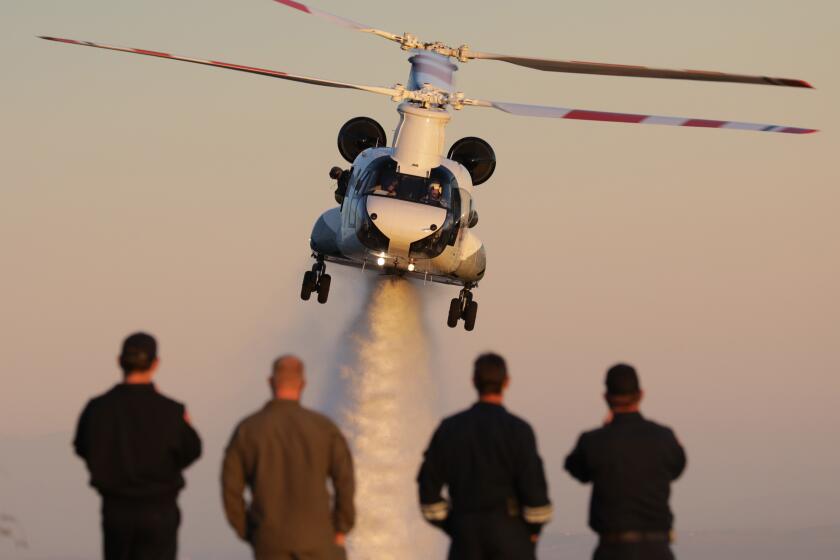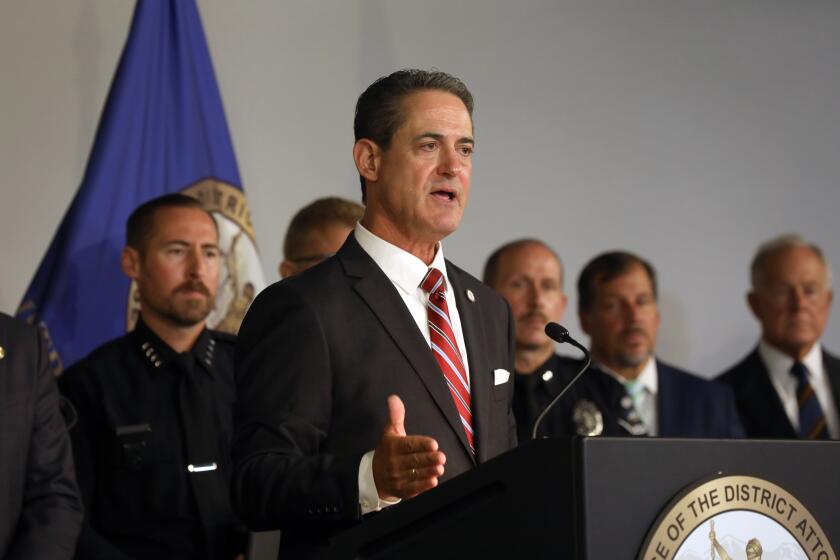COMMENTARY ON LAND MANAGEMENT : Controlled Fires Help Keep Natural Balance, Limit Disasters : Indians’ approach renews the environment and prevents fuel buildup that leads to apocalyptic firestorms.
Even before the menacing clouds of smoke above Orange County had cleared, politicians, local officials and homeowners were busy fanning the flames of another storm--the race to place the blame for the worst wildfires in local memory.
According to Gov. Pete Wilson, who arrived when the flames were still fuming, the fire was the fault of a “sick animal” arsonist, who could be captured with the help of a $50,000 reward.
To Rep. Christopher Cox (R-Newport Beach), whose district includes Laguna Beach, the solution to preventing future disasters of this sort is to increase state and federal penalties for arson, which will “deter those who play with fire.”
In perhaps an uglier development, angry accusations have begun to be leveled within Laguna Beach.
A group calling itself United Laguna has singled out the town’s pro-environment City Council as sharing responsibility for the devastating blaze. The group blames the council’s 1990 decision not to build a reservoir that would have held additional water.
Unfortunately, in their rush to satisfy the human longing for accountability, these groups and individuals have all missed the point.
A historical perspective yields but one conclusion: Fire is part of the natural order in Southern California; tract homes and fire prevention are not.
The first recorded fire in the Los Angeles Basin coincides with the first recorded European visit to the area. When Juan Rodriguez Cabrillo anchored off our coast more than 400 years ago in October, 1542, he found hot desert winds blowing and fires burning, much like the conditions we have experienced in recent days. They had been lit by the area’s first arsonists, the local Chumash Indians.
Evidently, the sight of billowing smoke so impressed Cabrillo that he named the anchorage Bahia de los Fumos, or Bay of Smokes.
While the Indians had been responsible for igniting the fires, their goal was anything but widespread destruction. “The country is good with many plains and trees,” wrote Cabrillo in his log, as he unwittingly paid tribute to the Indians’ wise land management.
California’s first inhabitants understood the coastal chaparral community. They knew that stands of mature chaparral offered little new growth to the game that lived in the area.
Mature stands crowd out sprouting plants through various means, including toxic chemicals that are destroyed by fire. (The fact that these plants burn readily is due to oil-based compounds that slow water loss through evaporation.)
As the Indians knew, this landscape is dramatically altered following a blaze. During the next several rainy seasons, sprouting annual herbs and grasses dominate, providing a much more nutritious source of food for the deer and rabbits the Indians themselves depended on.
Of course, most of the chaparral plants keep their vital water and energy store underground in a root mass known as a “crown,” where they are safe from all but the hottest blazes. About six years after the area burns, these plants again begin to dominate and limit the growth of the more nutritious herbaceous plants. The Indians would repeat the cycle, never permitting the kind of fuel buildup that leads to apocalyptic firestorms.
It was only when Europeans arrived and began to build their customary fixed dwellings that the natural order was upset and fire began to be a problem.
But we can still learn a lesson from the Indians’ approach to land management and how to renew the natural environment and still safely live in the chaparral.
Any solution that relies solely on the prevention of ignition is doomed to fail, because ignition will occur sooner or later in overgrown areas. Fire experts understand this. The lawmakers must, too, if we are to see new state and local policies about proscribed burning and brush clearing in the wake of this disaster.
More to Read
Sign up for Essential California
The most important California stories and recommendations in your inbox every morning.
You may occasionally receive promotional content from the Los Angeles Times.










